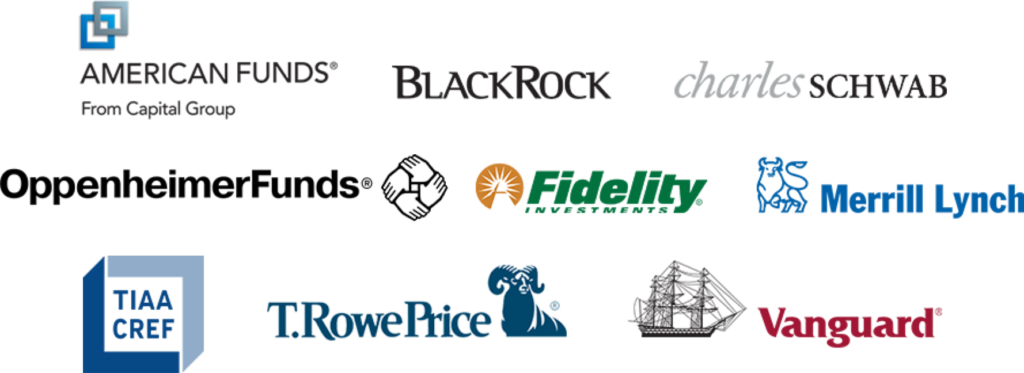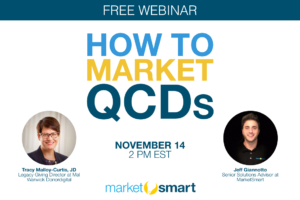How many decisions do you make each day? A quick google search yields our answer: somewhere near 35,000.
That number may seem intimidating, “How can I make 35,000 decisions a day?” You might find yourself pondering. Research shows that we utilize a variety of techniques to help guide us through our daily lives. From “impulsiveness” (choosing the first option presented to us), to “balancing” (weighing the factors involved, studying them and then using the information to render the best decision in the moment), our brains use myriad methods to navigate our increasingly complex world.
What does this have to do with qualified charitable distributions (QCDs)? A startling amount. The most obvious being that your donors (and prospective donors) are (just like you) faced with tens of thousands of decisions each and every day, and conveying to them the importance of donating to your organization amidst all their other cognitive chaos is no easy task.
Here’s three reasons you should be thinking about QCDs right now.
Information overload
Cornell researchers estimate that human beings make 226 decisions a day on food alone. (More on that here if you’re interested.) Access to the internet means information is literally always at your fingertips. Increasingly more “accurate” online ads are constantly on your screen, and the fight for your attention (however fleeting) has never been more fiercely contested.
In our “always on” world, it can be increasingly challenging to break through the noise to effectively communicate with your supporters. This can be exacerbated when the conversation turns to complex gifts, or subjects that human beings don’t enjoy thinking about (retirement, death, etc.)
Want to learn how other nonprofits are marketing QCDs?
Click hereQualified charitable distributions are a relatively new way for donors to give to your organization. Its origin dates back to 2006, however it was only with the passing of The Protecting Americans from Tax Hikes of 2015 (PATH Act), signed on December 18, 2015 that QCDs became a permanent fixture in US tax law. In our age of information overload, organizations cannot depend on financial advisors to make their constituents aware of the benefits of qualified charitable distributions. Collectively, as a sector, charities need to invest in marketing and building awareness around giving vehicles like QCDs.
Although less technical and complex than other vehicles (think trusts, estates, etc.), QCDs are not as simple as going to your donation page and hitting submit. Scouring through your IRA (individual retirement account) custodian’s website to find the IRA distribution form, and then completing it is no small feat. However, if we can make that process easier for the donor the rewards can be plentiful. Qualified charitable distributions can be up to $100,000 annually.
The time is now
The peak of the baby boom was 1960. Over the next ten years we will see nearly 10,000 individuals enter retirement age everyday. (If you’re interested in more on this topic, I highly recommend that you read the Federal Reserve Bank of St. Louis’ blog post here.)
At age 70½, individuals with IRAs must begin to take annual required minimum distributions from their account. It’s important to note that qualified charitable distributions count towards your required minimum distribution in any given year, and they provide a tax benefit.
Access the free guide to marketing IRA gifts.
Read nowWhat’s important to understand here is the sheer scale of the opportunity. The baby boomer generation is coming of age (70½, with a peak occurring over the next decade), and savvy nonprofits that are able to market highly beneficial giving vehicles (like QCDs) will raise more money from them. If there was ever a time to invest in QCD (and charitable IRA rollover) marketing, it would be now.
The “c” word
It pains me to say it, but there’s competition out there. When it comes to QCDs you face two primary competitors; other nonprofits marketing QCDs, and custodians that don’t want their clients to transfer their funds away from them. Let’s address both of these.

IRA custodians (think Vanguard, Charles Schwab, etc.) exist to hold money on your behalf. Custodians like Vanguard offer more services than just individual retirement accounts, they also offer traditional brokerage accounts, annuities, 529 plans, and more. Think about their business model for a moment, they make money when they have your money. The federal government mandates that individuals age 70½ must take a required minimum distribution from their IRA, however that distribution of income could very easily be moved from one Vanguard account (the IRA account) to another (the brokerage account).
Log in to your custodian online portal and try and locate the IRA distribution form. It’s not easy, is it? Think about it for a moment, the custodian is a source of competition, they make more money when funds stay with them.
The second source of competition you face is from your peers. Forward-thinking nonprofits are beginning to market QCDs (and more importantly, make the process easier and simpler for their donors.) We’re at an inflection point where some charities will generate millions of dollars in income from QCDs, while others never tap into its potential. I hate to be so blunt, but that’s the reality of the situation.
How do I apply this at my shop?
There are a few things you can do right now to get on the cutting-edge of marketing QCDs to your supporters. Simply take a look at this guide to marketing IRA gifts.


Will the webinar be recorded for later viewing?
Bethany, yes! The recording and slides will be shared tomorrow. Thanks for your interest!